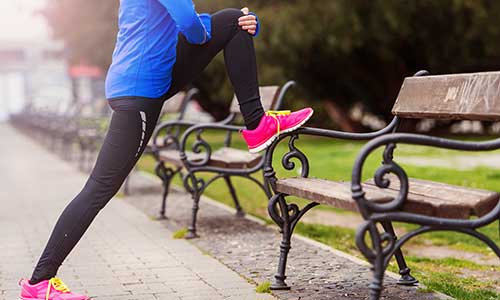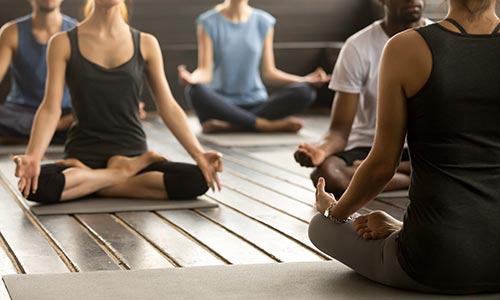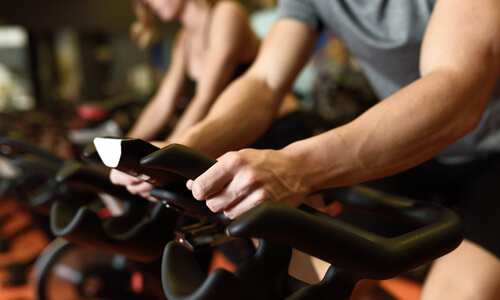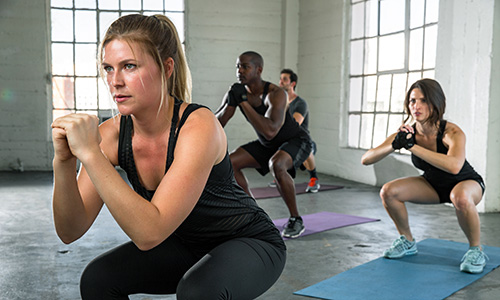What is cross training?
Cross training is essentially adding different types of training into your routine to achieve a more rounded set of skills that your body can call on when needed.

If your main method of training is cycling then your body is adapted to that same repetitive movement and exercise of cycling. By crossing over into another element of training this creates a more rounded set of skills that the body can call on when needed.
An example of cross training would be adding occasional running to a cyclist's training plan. This works different muscle groups and requires your body to adapt to get stronger and fitter because now it is being challenged to do something it isn’t used to.
Who is cross training suitable for?
We all want to enjoy our training, whatever that looks like for each of us. Cross training can benefit everybody. From the runner, cyclist or boxer to the person that goes to Yoga each week: by adding variation to your training plan, balance, fitness levels, core and strength can all be developed and built upon.
Benefits of cross training
Cross training adds variety which helps you stay motivated and not get bored. It also keeps your metabolism higher because the body is consistently adapting to the different muscles being worked.
Behind the scenes the neuromuscular changes through the challenges of cross training create different muscle and connective tissue adaptations which enhance movement and flexibility.
Injury prevention and recovery
Cross training can help you prevent and recover from injury by adding mobilisation, stability and strength to joints and muscles, while increasing your overall fitness.
The chance of injury through repetitive exercise, especially resistance and load-bearing activities, increases over time as it puts muscles, joints and bones under stress.

If you don’t rest those muscle groups, then they can’t fully recover and repair, so your risk of strains or sprains is higher.
It’s much easier for you to move if you’re flexible, so practicing Pilates or yoga, for example, can help challenge what your body’s used to doing and get you further along in the training adaption needed for some specific sports.
Cross training for specific goals
By mixing up your training plan, you can work on your strength, endurance, balance and flexibility, depending on what you’re lacking:
Strength and resistance
Looking to get stronger and maintain bone health whilst toning and shaping your body? Why not add in a Kettlebell Workout class which builds strength, boosts stamina and blasts fat plus increases your power and endurance. Or BODYPUMP™ is highly effective, working all of your major muscle groups in the one session as you squat, press, lift and curl.
Endurance

Add in cycling like an Indoor Cycling Class or Les Mills Sprint class to improve your cardiovascular fitness or add in running to your training.
The Human Race running club is a great way to improve your technique and whether training for an event or simply looking for some company when you run this could be for you.
SkiErg machines simulate Nordic skiing, which is one of the most challenging forms of cardio training – the single and double pole arm techniques target upper body, core and legs, as well as balance and fluidity.
Balance
- Try Body Balance - A Yoga, Tai Chi and Pilates-inspired workout that leaves you long, strong, calm and centered.
- Barre classes - A ballet-inspired style of training that allows you to shape and tone your whole body through a series of a ballet-inspired balances and stretches.
- TRX suspension class - A fast and effective full body workout using gravity and your body weight. Whereas weight training only works one or two muscle groups at once, TRX allows you to work multiple muscles simultaneously.
Flexibility
- Yoga can help you get more flexible and help improve recovery through other training, plus the breathing techniques really help runners or cyclists.
- Swimming helps build a strong core, increases mobility in shoulders and hip flexors. It’s also low impact so another great option for active recovery away from your main sport.
Examples of cross training workouts
Upper body workout for cyclists
Cycling can make you very tight due to the fixed riding position.This workout aims to increase mobility and strength in your upper body.
How many sets should I do? 2-3 sets per exercise
How many reps should I do? 12-15 reps per set
Perform each exercise for the required number of sets, then move on to the next exercise.
- SkiErg
- Pullovers
- Kettlebell press
- Pallof press
- Side plank
Lower body workout for runners
Strong legs and core to carry you are crucial, so add this workout to your programme to get real benefits that translate into your run.
How many sets should I do? 2-3 sets per exercise
How many reps should I do? 12-15 reps per set

Perform each exercise for the required number of sets, then move on to the next exercise.
- Squats
- Deadlifts
- Plank
- Prowlers
Lower impact workout for weightlifters
Use a slow tempo to really get the most from these exercises.
How many sets should I do? 2-3 sets per exercise
How many reps should I do? 6-12 reps per set
Tempo 3010 (3 seconds lowering, with no pause, then 1 second raising, and no pause).
- Push-ups
- Pull-ups
- Walking lunges
- Kettlebell step-ups
- Goblet squats
Key takeaway
Cross training can benefit everyone. By working each muscle group with a variety of activities, you can create a fit and balanced body.
If you’re not sure which cross training activities would complement your training plan, speak to one of our expert personal trainers who’d be happy to help you.
Last updated Tuesday 2 March 2021
First published on Monday 16 December 2019
